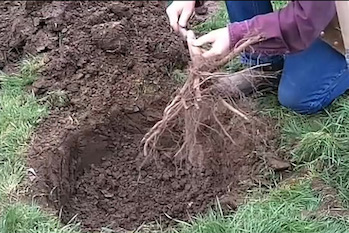Planting bare-root trees can be one of the best bargains in landscaping. While it may seem strange to plant a tree with roots not contained in soil, it’s actually an excellent practice that boasts immense success.
Most bare-root trees have already been growing for two years or more before they’re sold, so you’re getting a good-sized tree that’s ready to take off once it gets tucked into soil. Bare-root trees frequently take off more quickly than containerized ones because roots aren’t transitioning from container soil to local soil. Bare-root trees are planted during dormancy, which gives them weeks of root growth that spring-planted container trees lack.
Location - Determine where you’d like your trees to be located, take into consideration that your new trees will get much bigger.
Give them a drink! – Unpackaged your trees and soak them in a bucket of water for 2-3 hours.
Dig – Once you have received your trees you will need to dig a whole twice the size of the root ball, but no deeper. This can be done easily with posthole diggers or a shovel. Plant the tree so that the root flare, where the roots meet the trunk, is at ground level. Shovel in the remaining soil. It should be firmly but not tightly packed. Do not add soil amendments such as peat or bark. Do not use fertilizer, potting soil, or chemicals on your new trees.
Construct a water-holding basin around the tree. Give the tree plenty of water.
Stabilize the tree - Many small trees or saplings may have to be staked up so that they won't fall over and the trunks will grow upright.
The soil around your trees should be kept moist but not soggy. During dry weather, generously water the tree every 7 to 10 days during the first year. Water slowly on a drip line. Avoid watering so much that you see standing water.


Leave your comments